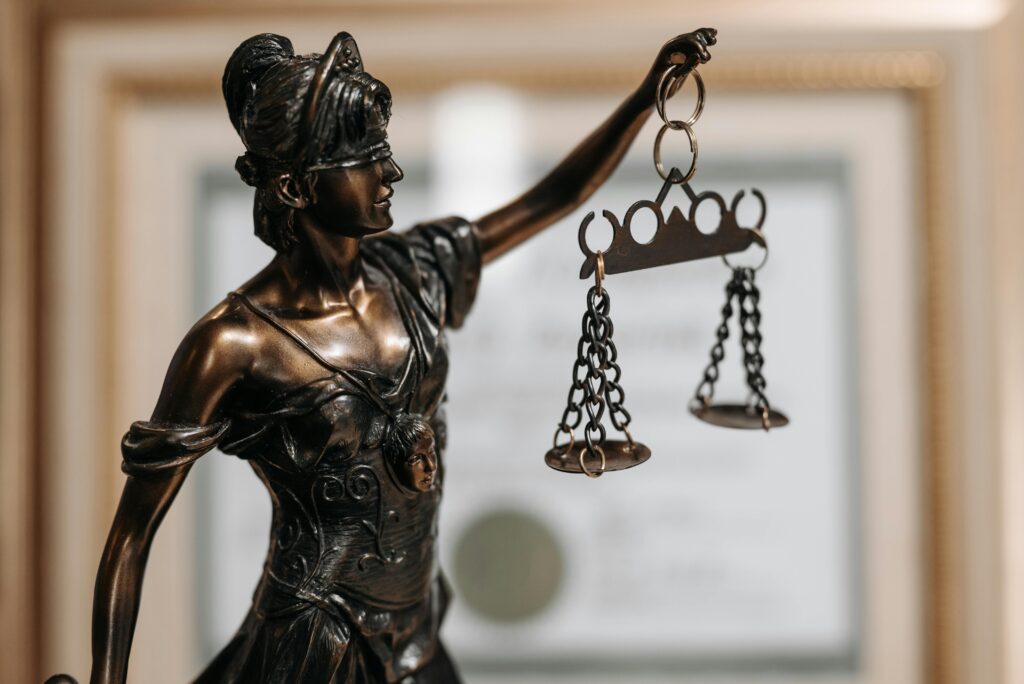Published on 16th January 2025
Authored By: Priyanka Saha
Amity University, Kolkata
ABSTRACT
Private defense, commonly known as self-defense, is a legal provision outlined in the Indian Penal Code (IPC) of 1860. This provision allows individuals to protect themselves, their property, and others from unlawful attacks. Recently, the IPC has been replaced by the Bharatiya Nyaya Sanhita (BNS) of 2023. While the BNS retains most of the provisions of the IPC, it also introduces significant amendments to certain laws. This article explores the concept, scope, and limitations of “private defense” under the BNS and highlights the changes made in comparison to the IPC.[i]
Meaning of Private Defence
Private defence is a fundamental legal principle that allows individuals to protect themselves, their property, or others from unlawful aggression. It is an inherent right, enabling a person to respond to imminent threats or attacks, whether posed by another individual or even an animal. However, the right to private defence must be exercised responsibly, with the use of reasonable and proportionate force.
It is crucial to note that this right is not absolute. It is contingent upon a genuine and reasonable apprehension of harm. Individuals exercising this right must act in good faith, ensuring their actions are proportional to the threat faced, and avoid excessive force. These limitations are designed to prevent misuse while maintaining the safety of individuals and upholding social justice.
Key Conditions and Limitations of Private Defence under the BNS
- Imminent Threat:
The right to private defence applies only when there is an immediate and real threat. If there is no actual danger, or if the threat has already passed, this provision cannot be invoked. Hypothetical or assumed threats do not qualify for the exercise of private defence. - Proportionate Use of Force:
The force used in self-defence must correspond to the level of threat faced. If an individual employs excessive force beyond what is necessary to neutralize the threat, they may face legal consequences. - Reasonable Judgment:
Actions taken in private defence must reflect the judgment of a reasonable person under similar circumstances. This ensures that responses are logical, justifiable, and grounded in reason. - No Right to Retaliate:
The right to private defence is strictly a protective measure, not a justification for revenge. It can only be exercised to prevent an imminent attack, not as an excuse to retaliate once the threat has subsided.[ii]
Private Defence as a Safeguard
Private defence is a cornerstone of legal systems worldwide, designed to protect individuals from harm and maintain societal order. By balancing empowerment with responsibility, the right of private defence ensures justice while preventing its misuse.
The introduction of the BNS has reinforced this principle while refining its application to address contemporary legal needs. Through its provisions, the BNS seeks to create a just and equitable framework for safeguarding individual rights without compromising public safety.
The right of private defence, as outlined in the Bharatiya Nyaya Sanhita (BNS), 2023, provides individuals with legal protection to safeguard themselves and their property. It carefully balances the right to self-protection with necessary restrictions to prevent misuse.
- General Principle: Private Defence is Not an Offence (Section 34)
- What it means: Actions taken in self-defence or to protect property are not considered criminal. This principle allows individuals to act against threats without fearing legal repercussions.
- Purpose: Protects people and their belongings from harm or danger.
- Defending Life and Property (Sections 35–39)
Section 35: Protecting Yourself and Your Property
- Every individual has the right to use reasonable force to defend themselves or their possessions from threats such as theft, robbery, or physical harm.
- Example: If someone tries to steal your wallet, you can take appropriate action to stop them, such as physically restraining them.
Section 36: Defence Against Incapacitated Offenders
- The right to defend yourself applies even if the aggressor cannot be held criminally responsible, such as in cases of intoxication or mental illness.
- Example: If an intoxicated person attacks you, you are still justified in taking steps to protect yourself.
Section 37: Limits on the Right to Private Defence
- This section outlines when self-defence is not allowed:
- If the act doesn’t pose a real threat of death or severe injury.
- If the aggressor is a public servant acting lawfully and in good faith.
- Example: You cannot claim self-defence against a police officer who is controlling a protest peacefully.
Section 38: When Causing Death is Justified
- In life-threatening situations or when facing severe crimes like rape or acid attacks, you are legally permitted to use force that may result in the offender’s death.
- Example: A victim of a potential rape can use lethal force to protect themselves from the attacker.
Section 39: Using Non-Lethal Force
- If the situation doesn’t involve a life-threatening crime, you can still take necessary action to stop the offender, as long as it doesn’t result in their death.
- Example: Preventing a thief from escaping by tackling them, even if it results in minor injuries.
- When and How the Right to Defence Begins (Sections 40, 43)
Section 40: Defence of Life
- The right to defend yourself starts as soon as there is a reasonable threat and lasts as long as the danger continues.
- Example: If someone threatens you with a knife, you can act to protect yourself from the moment the threat arises until it is neutralized.
Section 43: Defence of Property
- This works similarly to defence of life, beginning when a threat to property arises and continuing until the danger is over.
- Example: If someone is trying to steal your car, you can act to stop them until the situation is under control.
- Defending Property (Sections 41, 42)
Section 41: Using Deadly Force for Property Protection
- In severe cases, such as robbery or night time housebreaking, using force that could cause death is permitted.
- Example: Defending your home against armed intruders during the night.
Section 42: Non-Lethal Defence of Property
- For less serious threats, you can still act to protect your property, but without causing the offender’s death.
- Example: Using physical restraint to prevent someone from vandalizing your property.
- Self-Defence When Innocent Lives Are at Risk (Section 44)
- In situations where defending yourself might unintentionally harm innocent people, the law still protects your actions if they were necessary to prevent a greater danger.
- Example: If a mob threatens your life and you fire a weapon in self-defence, accidentally injuring a bystander, your actions are not criminal if they were essential to protect yourself
The BNS, 2023 ensures that individuals can protect themselves and their property without legal repercussions, provided their actions are proportionate to the threat. At the same time, it establishes clear boundaries to prevent misuse of this right.[iii][iv]
Landmark Judgments on the Right of Private Defence
1. James Martin v. State of Kerala (2003)[v]
In this case, the court emphasized that several factors need to be evaluated when determining whether the right of private defence was exercised appropriately. These include the injuries sustained by the accused, the perceived threat to their safety, the injuries inflicted by them, and the context in which the events occurred. The court acknowledged that it is unrealistic to expect someone facing imminent danger to precisely calculate the level of force needed to respond. The assessment of such situations must account for natural human reactions and behavior in moments of crisis.
2. Yeshwant Rao v. State of Madhya Pradesh (1992)[vi]
This case revolved around the accused defending a girl from an assault that created a reasonable sense of danger in his mind. The court upheld that his actions were justified, as the right of private defence allows an individual to protect not only themselves but also others from harm. The accused’s intervention to safeguard the girl was seen as a legitimate exercise of this right.
3. Onkarnath Singh v. State of Uttar Pradesh (1974)[vii]
Here, the court ruled that the force used by the accused was disproportionate to the threat posed. The alleged danger had already subsided when the accused carried out the deadly attack. As the perceived risk no longer existed, the excessive force could not be justified under the right of private defence.
CONCLUSION
Private defence, as outlined in the Bharatiya Nyaya Sanhita, 2023 (carrying forward principles from the Indian Penal Code), serves as a crucial safeguard for individuals and their property against unlawful aggression, particularly in situations where law enforcement is unavailable or out of reach. This legal provision strikes a balance between an individual’s right to self-preservation and the broader need to maintain order in society. Understanding this concept is essential for every individual, as it ensures that self-defence is exercised responsibly, justice is upheld, and the rule of law is maintained.
The right to private defence plays a crucial role in ensuring individual safety and preserving social harmony. The Bharatiya Nyaya Sanhita, 2023, reaffirms this principle while incorporating safeguards to prevent abuse. By focusing on key conditions such as the immediacy of the threat, the proportionality of the response, reasonable judgment, and the prohibition of retaliatory actions, the BNS ensures this right is exercised responsibly. These provisions uphold the delicate balance between empowering individuals to protect themselves and maintaining societal order, fostering a fair and just legal framework.[viii]
References
[i] Indian Penal Code, 1860.
[ii] Mukesh Kumar, ‘Right to Private Defence Under BNS: A Comparative Analysis with Indian Penal Code’ (11 January 2024) tutorialspoint < https://www.tutorialspoint.com/right-to-private-defence-under-bns-a-comparative-analysis-with-indian-penal-code > accessed 21 December2024
[iii] Adv. Hinesh Navratan Rathor , ‘Right of private defence under BNS ( Bharatiya Nyaya Sanhita)’ , Legal Services India E – Journal< https://www.legalserviceindia.com/legal/article-18134-right-of-private-defence-under-bns-bharatiya-nyaya-sanhita-.html > accessed 21 December 2024.
[iv] Bharatiya Nyaya Sanhita ,2023.
[v] James Martin V. State of Kerala – AIRONLINE 2003 SC 829.
[vi] Yeshwant Rao V. State of Madhya Pradesh – AIR1992SC1683
[vii] Onkarnath Singh V. State of Uttar Pradesh -1974 AIR 1550
[viii] Indian Penal Code, 1860.




